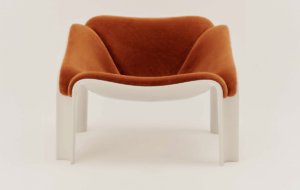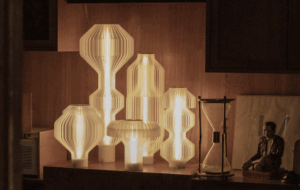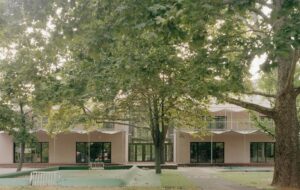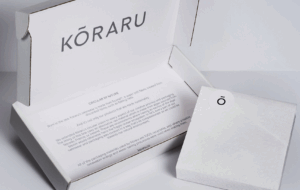

words Alex Wiltshire
The first visitors to Inn the Park, the new restaurant in St James’s Park, were spectators for the London Marathon – and it hadn’t even opened yet.
As heavy rain fell, the watching crowds flocked for cover, giving the inn its first toughness test. Designer Tom Dixon’s interior for the Michael Hopkins Architects-designed restaurant wasn’t exposed to the hordes, but in any case he’s built it to withstand that kind of punishment. “It had to be heavy duty – undesign, really,” Dixon says of his first interior. “It was kind of similar to designing a British Rail carriage. It’s open all day and evening, it has to cope with mud and children – imagine it on a sunny day overwhelmed with people looking for ice cream. Madness, really, for anywhere that touristy.”
Inn the Park, commissioned by the Royal Parks, will be a British-themed cafe by day and restaurant by night, run by Oliver Peyton’s Gruppo group, which includes Atlantic Bar and Grill. Dixon’s brief – constricted by predetermined walls, floor, ceiling and kitchen positioning – was to create a British ambience to complement Peyton’s menu of apple crumble and knickerbocker glories.
His team designed new and custom furniture throughout the space, including squaddie-proof chairs for the terrace: they were warned that soldiers from the barracks in the park regularly threw furniture from the old cafe into the nearby lake. They also adapted a production mirrorball light into a doughnut shape and designed the kitchen and fridges. Chairs and benches are upholstered in patterned leather.
Using terrazzo aggregate, stainless steel, bronze cladding and smoked glass, Dixon aimed to create a rugged, honest yet warm interior that would age well. “It’s practical, not too elegant, slightly humorous and engaged with materials and the industrial process,” he says. However, Dixon concedes that the cafe ultimately has to be a backdrop to the food and the park. “We weren’t going to try to compete with that,” he says. “We want it to play into the whole civic pride thing, like the Barbican in the 1960s and Victorian toilets.”

















